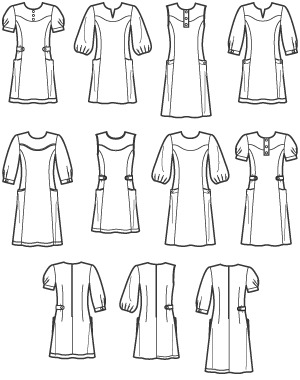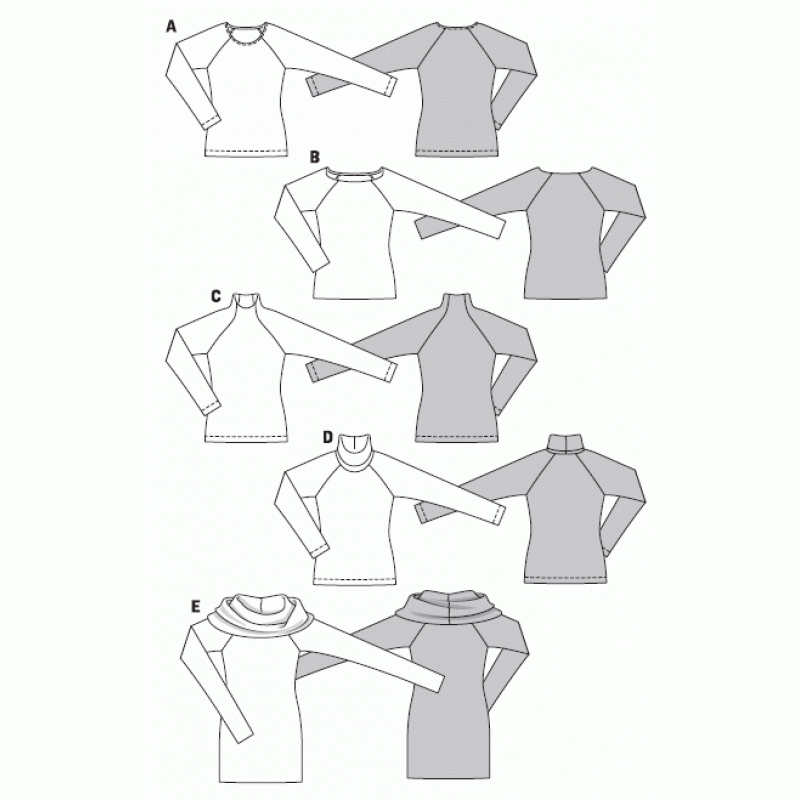Looking back in time, I believe I remember buying this pattern, probably about 1998, from a bin of discounted Vogues at Winmill Fabrics at the edge of Boston's Chinatown. I have never been anything less than in love with it since, but it intimidated me with its "Advanced" rating.
And now, at least 15 years after this pattern went out of print, I am kind of scratching my head over that difficulty rating, because Vogue 1573, at least version A, turned out to be quite straightforward to fit and sew.
Because view A is designed for sheer fabrics, it includes instructions for using small pieces of silk organza to interface the front placket and the side zipper. The collar is simply a folded piece of the self fabric (with no interfacing). The pattern instructs the sewer to create narrow seams (I first sewed each seam and then serged it with a three-thread overlock), and to finish the lower hem with 1/2" scalloped lace. The sleeve was to be finished with a turned up hem, but I didn't like how that looked, so I used the same lace there. If you can believe it, I bought three yards of lace (rather than the 2 3/8 yards specified in the pattern) and ended up with the right amount to the 1/2". Seriously. An inch less and it wouldn't have been enough.
This particular nylon lace came to me, as so many fabrics do, as the result of a great
FabricMart sale. I ordered 2 1/2 yards for around $15. The lace trim was $3 a yard, for a total of $9, while the buttons were $1.25 from a 50% off sale at Hancock's. And of course a black invisible zipper for about $1.50. Not counting the black thread and small amount of silk organza which I had on hand (or the cost of the pattern, which I have long since depreciated!), the total cost of the garment was well under $30. I'm not hung up on low or high cost, but I think the resulting dress really does look expensive!

Although I made adjustments, the dress didn't pull any punches in terms of fit. I made my usual changes and I think they worked out pretty much perfectly. I used the size 8 at the neck and shoulders, through the armhole notches. At that point I transitioned to size 10, and then to size 12 by the bottom of the bodice pieces. I shortened the bodice by 1" at the printed lengthen/shorten line, and then shortened the waistband pieces by 1/2". From the waist through the hem I used the size 12 pieces. The shoulders were narrowed by a good bit, probably 1/2" to 5/8" when all was said and done (against my better judgement, I waited to do this until after basting the sleeves in place to check for fit; that was the safest approach, but it did take me more time). I ended up shortening the sleeves about 1".
The skirt section I did not shorten at all. It finishes out two to three inches below my knee, which I would usually find too long and dowdy. But with the openness and lightness of the lace, that length seemed rather elegant and more appropriate to the 1940s style than my usual at-the-knee length.
At the side zipper (very necessary to pulling this non-stretch lace dress on), I chose to keep the full width of the seam allowances all the way down the side seam. I might have been able to reduce them somewhat, but I felt that doing so might make the zipper area more fragile. As it is, I do need to be careful when zipping the dress. The zipper application is fine, but it is still easy to snag the lace and to catch it in the zipper. Other than that, this delicate-looking dress should be quite sturdy and washable. It's completely comfortable.
This pattern makes use of three different grainlines. The bodice, collar and sleeves are cut on the straight of grain, the waistband is cut on the length of grain and the skirt sections are cut on the bias. The pattern photo shows a striped lace, which really highlights these variations of the grain. On my dress it is more subtle, but I think it's a nice touch.
I plan to make or buy another slip to wear with the dress. The one I have on here is a fairly standard-issue beige vintage nylon full slip. It doesn't cover my bra straps in back and it ought to be longer. The pattern includes a slip, but I have other pattern options as well. On someone else, I think a red slip would be rather gorgeous under this dress, but it's too much for my coloring. Black would also be nice, but I believe that I prefer the lightness of the beige. It keeps the black from being too harsh for me. A little black dress that is more flattering than a solid--I like that!
When will this dress get its first outing? I'm not sure yet. I will have a swing dancing holiday party, my husband's office party and then lots of dressy evenings at Lindy Focus, a week-long swing dance camp happening the week after Christmas. I can't wait!
Oh, and by the way--I'm already working on the next version of this pattern, this time a blouse length version. I'll look forward to showing it soon.


























